Crafts Kurdish militia: modernization of armored vehicles in northern Syria
While many of our articles were devoted to the attempts of various groups fighting in the Middle East region to “improve” their armored vehicles, we have never dealt with self-made upgrades to Kurdish armored vehicles. Not that there was a complete lack of home-made armored vehicles from northern Syria, but rather these local upgrades were often so terrible that we preferred to bypass them. Nevertheless, several interesting projects have recently appeared on the territory held by the Kurds, which are described in this article.
Modernization and alteration of Kurdish armored vehicles are carried out by two large workshops located in the province of Aleppo (Afrin district) and the province of Hasaka. The workshop in Hasaka is provided with several small workshops scattered throughout the province. Interestingly, it is very similar to the logistics of the Islamic State (prohibited in Russia) in Syria, which also organized two large workshops, supplied with parts and spare parts from several small workshops located in the territory seized by the militants.
But compared to other large groups participating in the civil war in Syria, the YPG (Yekîneyên Parastina Gel - self-defense units; paramilitary wing of the Kurdish military committee) is the least fruitful in the self-made modernization of armored vehicles. In order to fill such a gap in its capabilities, YPG has become very active in the manufacture of makeshift armored vehicles, usually based on tractors or trucks. As for normal factory armored vehicles, here the YPG group counts on vehicles captured from the Islamic state, vehicles abandoned by the Syrian government army, and weapons transferred by it in exchange for safe passes (for example, after retreating from the Mennagh air base in 2014). YPG received three at that time tank T-72 "Ural" and one tank T-55A, which is undoubtedly a big jackpot for the YPG. But in addition to the simple operation of the captured vehicles in their initial configuration, the YPG also carries out the modernization of most of the armored vehicles. Starting from simple things, for example replacing ZSU-23 trunks with trunks from ZU-23, and ending with the production of finished reservation sets, all this is within the power of YPG.
Having captured the former base of the Syrian Arab army, the YPG militia also received a limited number of BTR-60, decommissioned shortly before the outbreak of the civil war. Sometimes they were used by defenders as long-term firing points, but most of these cars were thrown and rusted in different parts of the Syrian base. Since the repair of these cars (almost all with a flat tire), according to other invaders, was too expensive and not worth the effort to restore them, the YPG group quickly became the largest operator of serviceable BTR-60 in Syria.
At least two of these BTR-60 have been upgraded by hanging additional armor on the body of the vehicle and adding on-board screens and mud guards covering the wheels. Interestingly, in one copy, an 12,7-mm DShK machine gun was installed to replace the 14,5-mm KPVT machine gun, usually mounted in the BTR-60 turret. This machine in the picture below also received a new engine (as evidenced by the protruding part in this place), probably due to the fact that the original engine was damaged. Unfortunately for the YPG fighters (since no major modernization efforts were spent) this car was stuck in a ditch while fleeing militants from the Islamic state in Hasaka province, during which the BMP-1 was also captured. Before leaving the car, the crew removed the DShK machine gun, depriving the enemy of a valuable trophy.
Another rarity in the service of the YPG grouping is the MT-LB multi-purpose tractor, which in Syria, according to the documented evidence, already six pieces. Two cars are in service with the Islamic state in the province of Deir ez-Zor, while the other four are fighting YPG fighters in the province of Hasaka. All six cars came from Iraq, where an Islamic state seized them from the Iraqi army. Although Syria bought almost all armored vehicles available for export from the Soviet Union, it never bought MT-LB. It is assumed that the vehicles operated by the YPG group were already in the hands of the Kurds before the start of the civil war in Syria.
Interestingly, the MT-LB in the pictures below have wider tracks. This modernization took place under Saddam Hussein. These machines sometimes denote MT-TWT. Two MT-LB YPG groups can be seen in the series of combat vehicles in the lower photo, which also has two T-55 tanks, upgraded by installing a machine gun shield, storage boxes and mud guards, and one bulldozer equipped with a tower from the BMP- 1.
Unlike Afrin County, in which the YPG has only one T-55 tank, the fighters in Hasaka province currently have a significant number of T-55 tanks captured mainly from the Islamic State. Some of them were immediately thrown into battle, but most of the T-55 tanks were sent to the workshops for repair and modernization. The level of modernization of each tank varies depending on its condition, tanks requiring minor repairs are sent to the front as quickly as possible.
Most of the modernization process consists of installing a shield for the 12,7-mm DShK loading machine gunner, new storage boxes, new mud panels and a new painting, resulting in the appearance of colorfully painted tanks in northern Syria. At least one T-55 tank was upgraded by installing lattice screens on the sides, which indicates the improvised nature of all these upgrades.
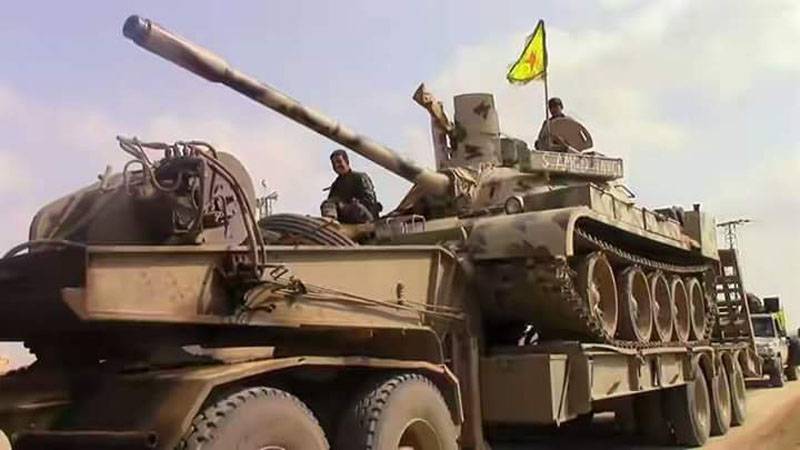
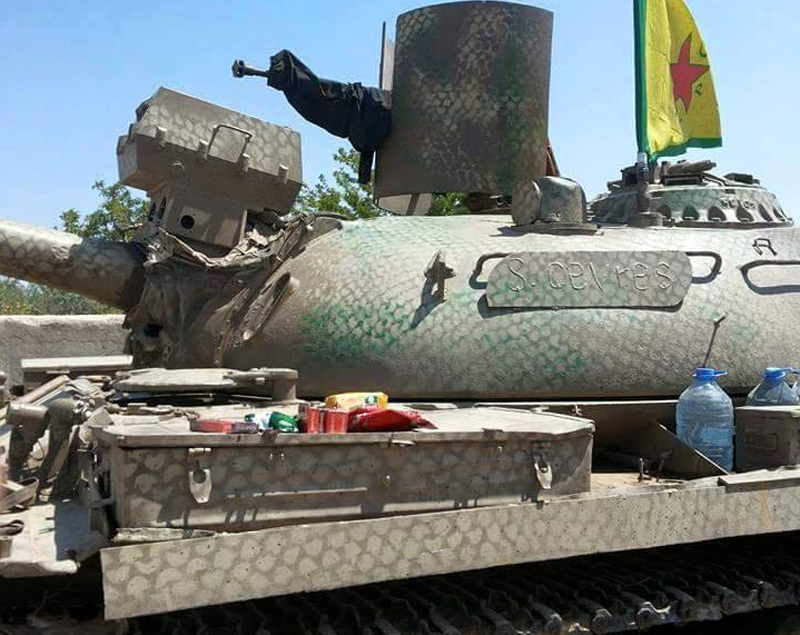
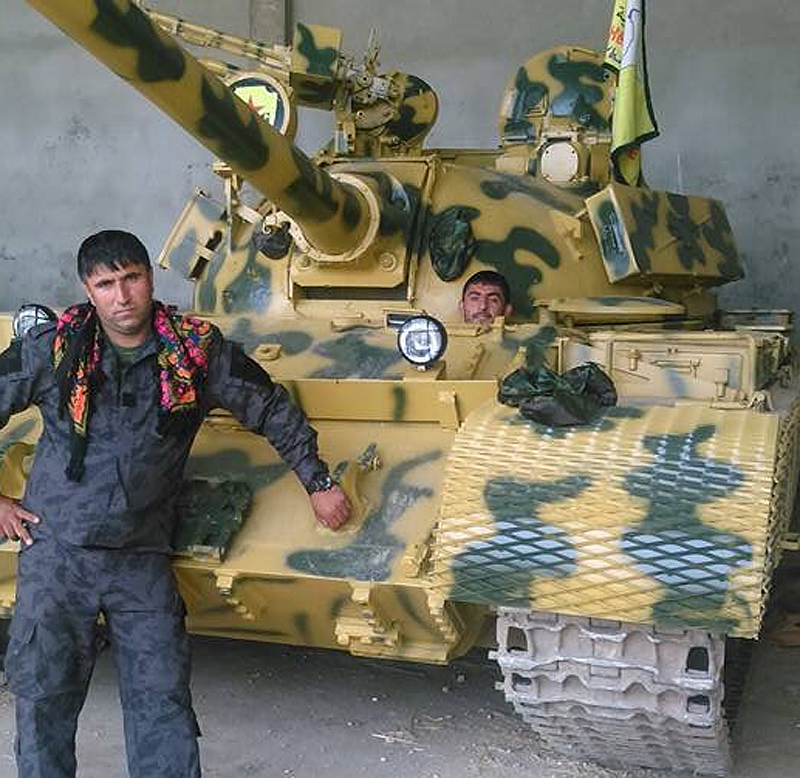
Not all combat vehicles captured on the battlefield are recoverable. A damaged tower or the absence of normal spare parts leads to the fact that the tank can move, but it completely becomes useless in its role, since the armament is inoperative. If in the Syrian army this would mean the cancellation of the tank, then the YPG organization, as a rule, refuses to send precious platforms to the landfill and as a result self-made light turrets can often be seen on YPG machines.
Two similar vehicles based on the T-55 tanks armed with 12,7-mm W85 and 2x14,5-mm KPV machine guns, as well as two BMP-1 tanks with 73-mm 2-28 guns, replaced with the DSH-machine guns and replaced with the SCHM guns that were replaced with the SCHM guns and replaced with turrets with the DShK gun and the 90A64 guns, replaced by turrets with the DShK gun and dropped the 7,62A1 guns, and the towers with the DShK gun were replaced, and the towers, which were replaced with the DSHK gun, were replaced by the XNUMX-mm tank gun XNUMXAXNUMX. As a result, these BMPs became very similar to the Czechoslovak BTR OT-XNUMX, equipped with an OT-XNUMXA turret, armed with one KPVT machine gun and one XNUMX-mm PKT. It is curious that the second BMP-XNUMX has another turret in the stern, into which at least some weapon.
In order to install on the first T-55 tank a new turret, the original turret, and the gap in the turret support ring was tightly welded so that it was possible to install a smaller turret. Also interesting is the nasal booking of the car, which was strengthened, with the result that the frontal sheet became more sloping than before. Finally, a storage box was added to the stern of the tank. The network has a video of this machine with foreign fighters who have joined the wing of the YPG, as well as a training video with tests of this machine-gun turret.
Another photo of the same machine is shown below, where we see next to it another YPG M1117 Armored Security Vehicles (ASV) grouping vehicle. Several of these machines were inherited from the Iraqi army, and the rest were seized from the Islamic state and subsequently transferred to the Syrian wing of the YPG. This M1117 armored personnel carrier is armed with one KPVT machine gun in a homemade turret and has enhanced protection in the form of metal sheets to protect the shooter and screens to protect the wheels.
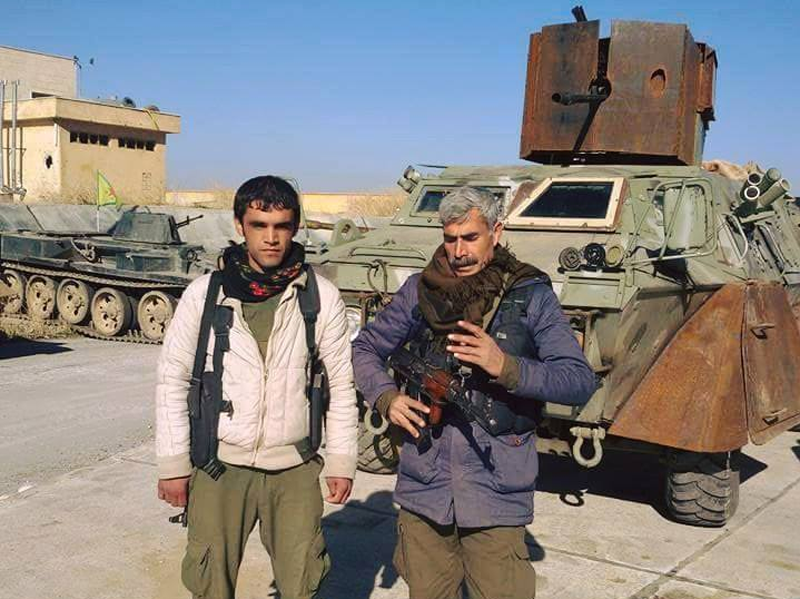
The second converted T-55 tank was first seen during the attack on the city of al-Shaddadi in the province of Hanaka against the militants of the Islamic State, which ended with the capture of the city.
This instance is distinguished, above all, by a new larger tower. Interestingly, this tower is very similar to the tower of the North Korean 323 BTR. But in reality, its origin is less exotic, since the same towers were already seen earlier on the "self-made" combat vehicles of the YPG group.
New towers are armed with two 14,5-mm machine guns CPV, and not one 12,7-mm DShK. This, along with the installation of on-board screens and a radio antenna, are external features of this platform. The camouflage coloring, in contrast to the simple coloring of the previous model, is more suitable for action in the vicinity of the city of al-Shaddadi, where the fields are covered with green vegetation.
The situation with armored vehicles in Afrin district had previously been critical, where until recently the YPG grouping had no combat vehicles until the capture of the Mennag airbase, where it captured three T-72 Ural tanks, one T-55A tank with a North Korean laser rangefinder and one BMP-1 . Subsequently, they were modernized to varying degrees and then took part in the YPG offensive against the Syrian Free Army in northern Aleppo. Currently, two tanks T-72 Ural, tank T-55A and BMP-1, as well as another captured tank T-62, are still in the hands of the YPG grouping.
The only BMP-1 in Afrin district has been upgraded through additional and booking, and that is no longer surprisingly storage boxes. New protection consists of additional sheets covering the engine compartment and lattice screens in front of the machine. The tower also received additional steel plates, after which it became similar to the protection of the “Rugs”, which was installed on later BMP-2. The addition of on-board screens and a storage box makes this machine look like a Saddam, like the BMP-1, still the former Iraqi army.
Also, the Syrian government army was captured and subsequently modernized by the organization YPG tank T-55A. One of these tanks was modernized by the North Koreans a few decades ago. This single tank T-55A, operating in the district of Afrin, received new guards, side screens, storage boxes, camouflage and lattice screens that protect the stern.
The most valuable car grouping YPG also undergone certain upgrades. All three tanks T-72 Ural, operating in the district Afrin, were modernized. Compared to the rather weak upgrades of the Republican Guard and the Islamic State, two of them received a full set of lattice screens and spaced armor for protection against cumulative projectiles. Apparently, the T-72 tanks got female crews! (at least two of them)
The first (photo below) has lattice screens only in the rear, plus side screens. The other two tanks, in addition to these elements, have lattice screens around the entire hull and turret and another camouflage coloring. An infra-red illuminator was also broken on one tank and replaced by three truck-mounted headlamps.
Unfortunately for the YPG grouping, in March 2016, one of the upgraded T-72 tanks was destroyed by an ATOW TOW launched by the Free Syrian Army. The TOW missile pierced the car and caused a fire. At least one crew member was seen before the missile hit the tank, not in it, but the other two were in the tank and no doubt died.
With minimal chances of getting large deliveries of combat vehicles from abroad in the near future, almost all the groups fighting in Syria are trying to modernize various types of armored combat vehicles in order to increase their survivability. Therefore, the Syrian battlefield is now rapidly transforming into a collection of hitherto unseen iron crafts. The contribution of the Kurdish organization YPG in this area, previously limited to ridiculous "self-made" monsters, is now rapidly increasing, and its modified machines tend to take their rightful place among the abundance of do-it-yourself projects in Syria.
Materials used:
www.spioenkop.blogspot.ru
www.twitter.com
www.ru.wikipedia.org
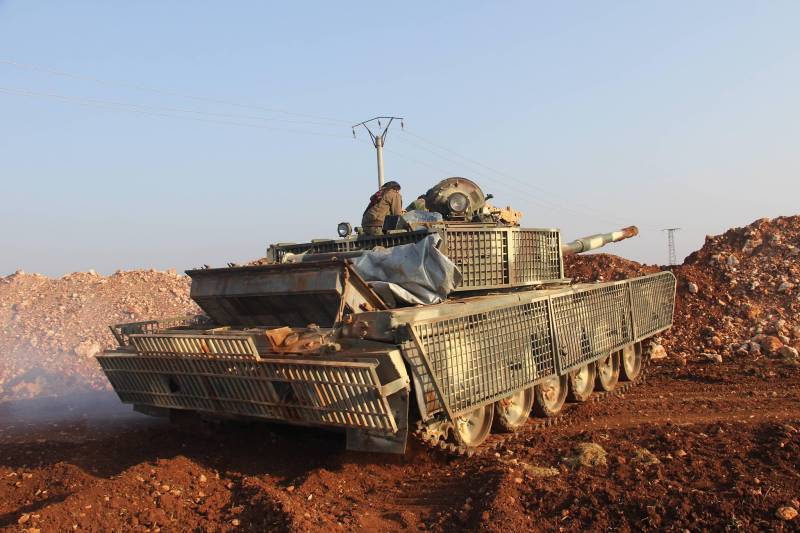
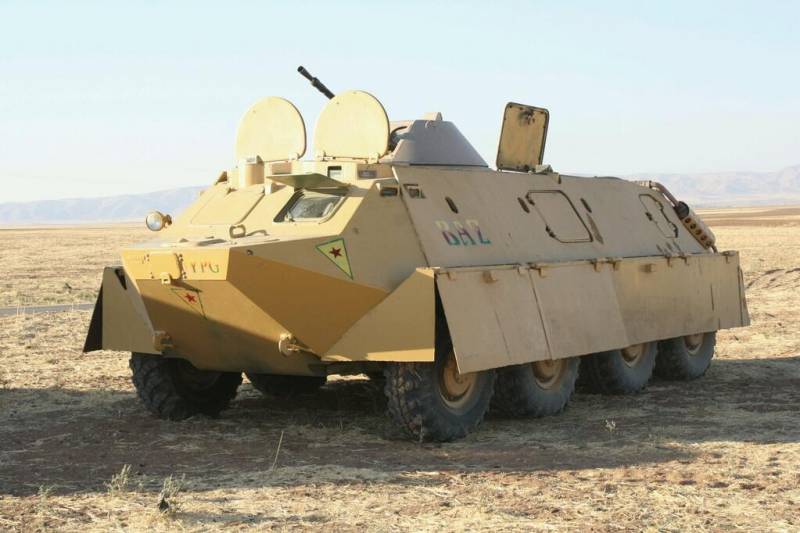
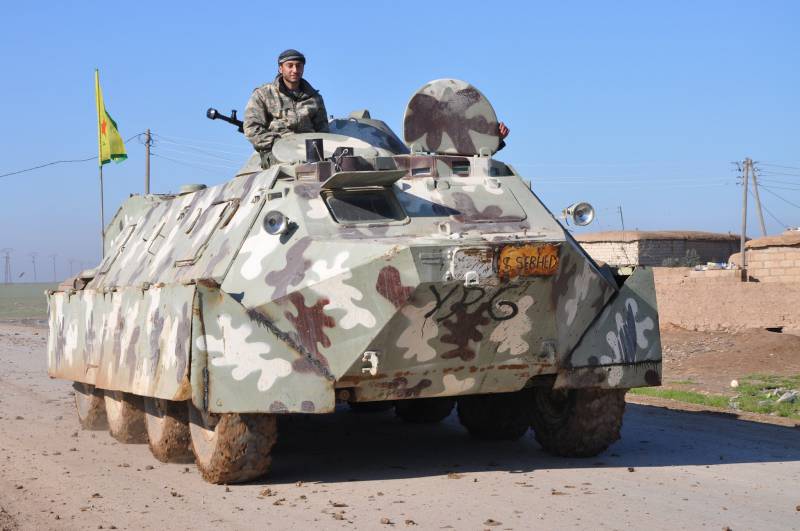
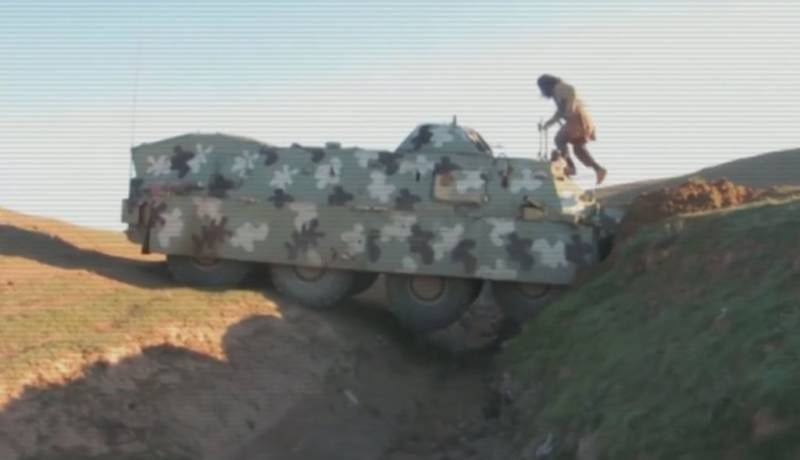
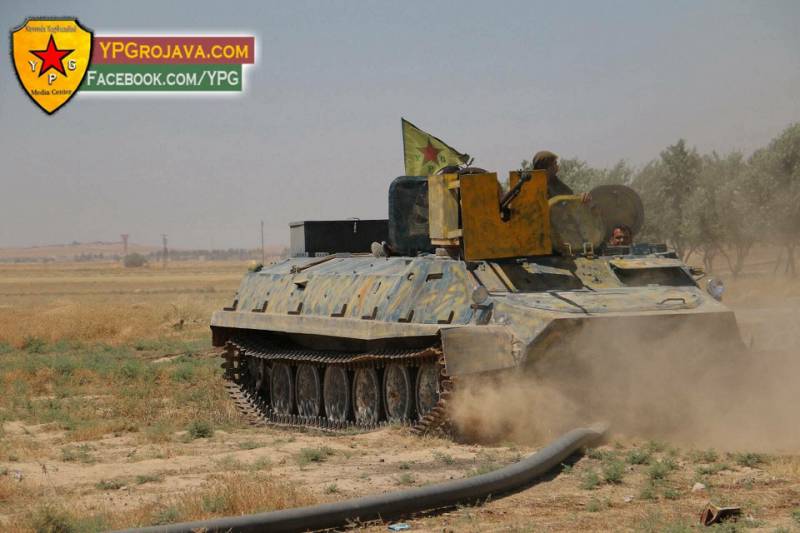
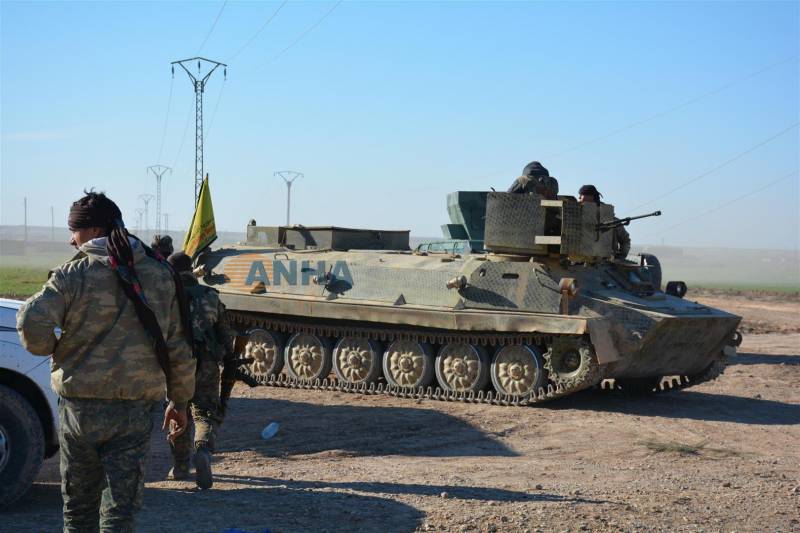
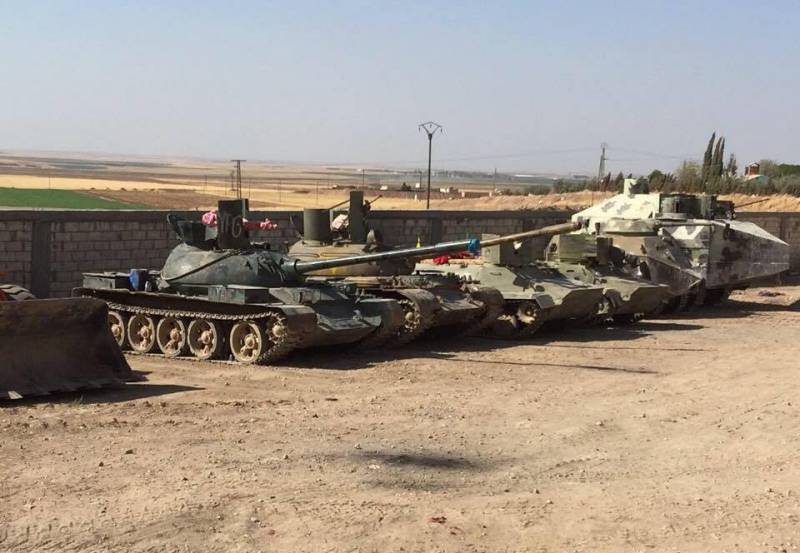
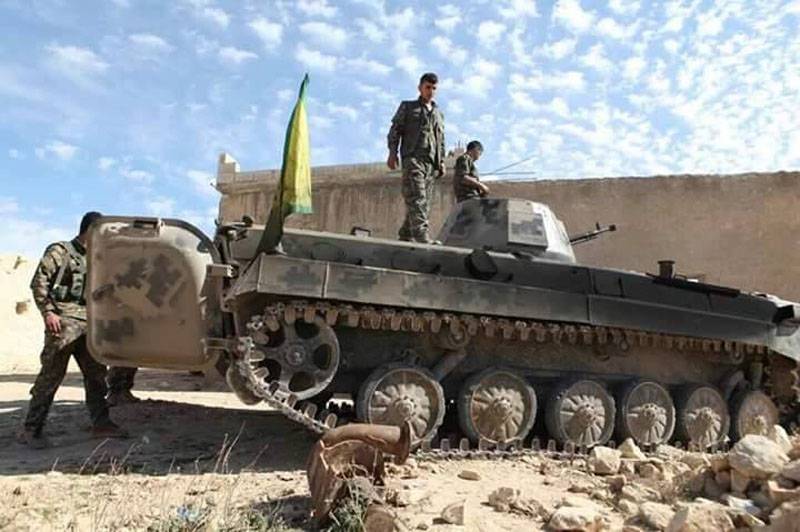
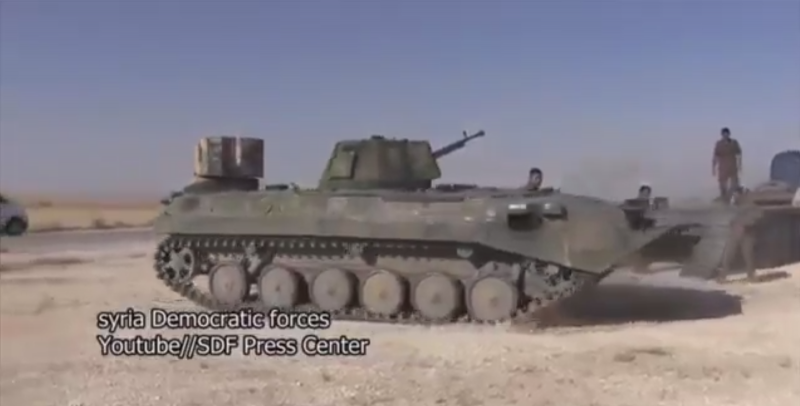
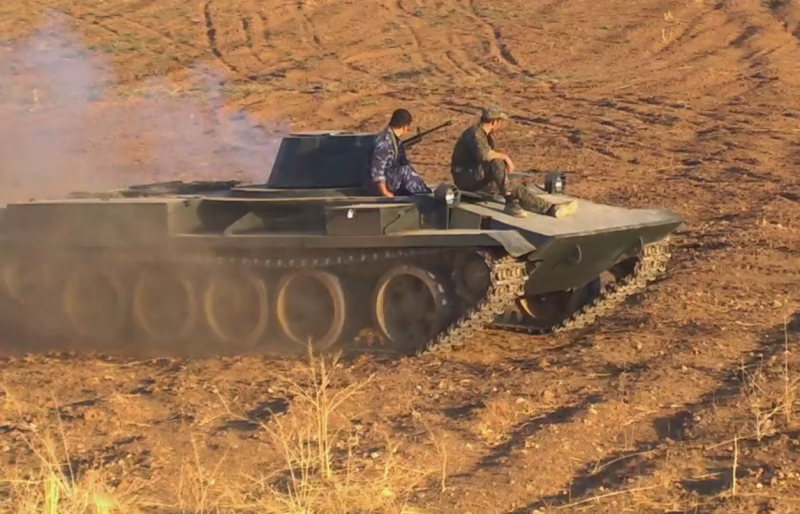
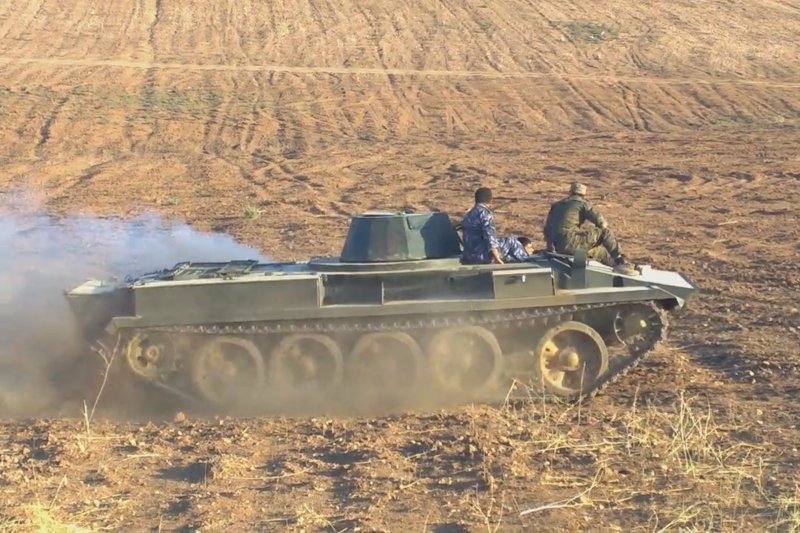
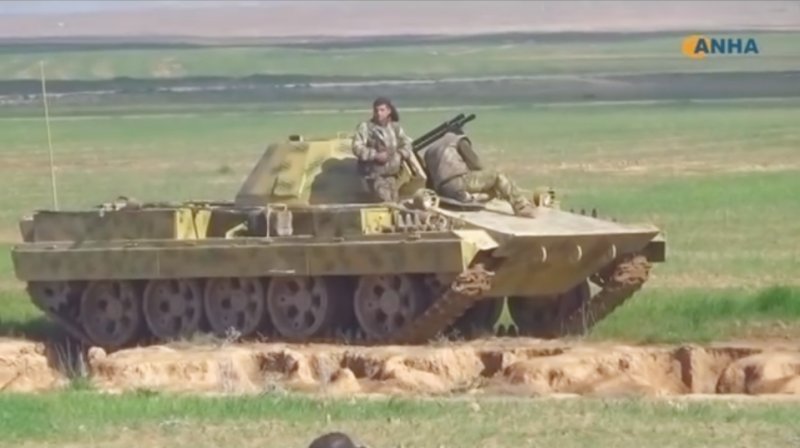
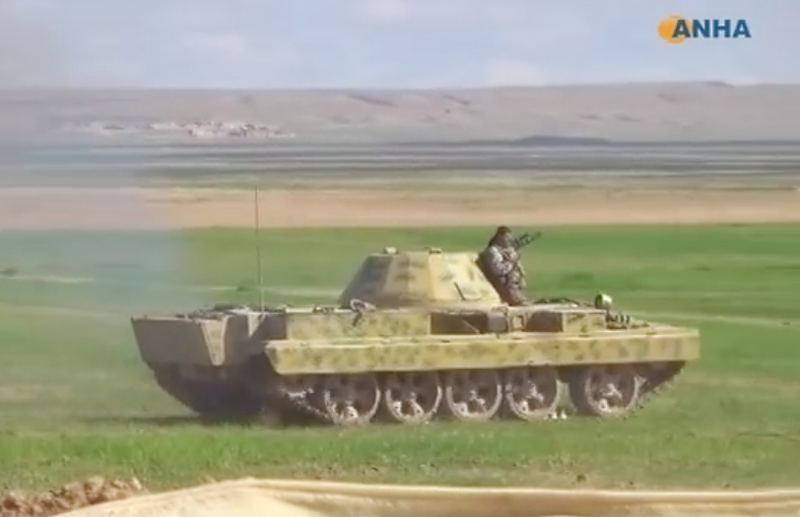
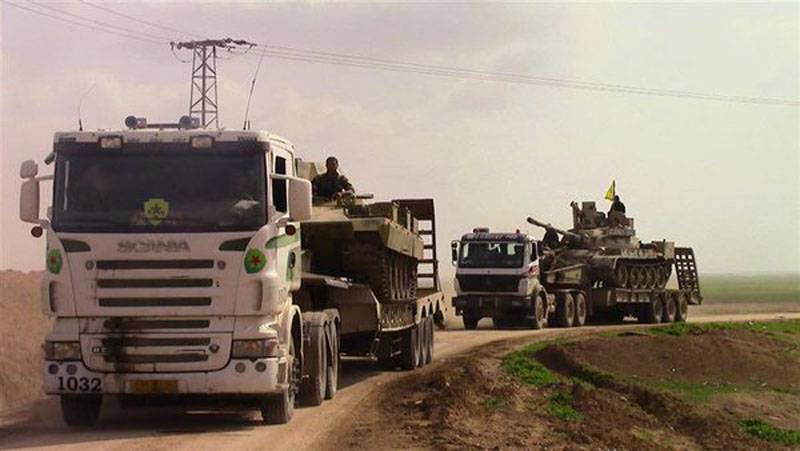
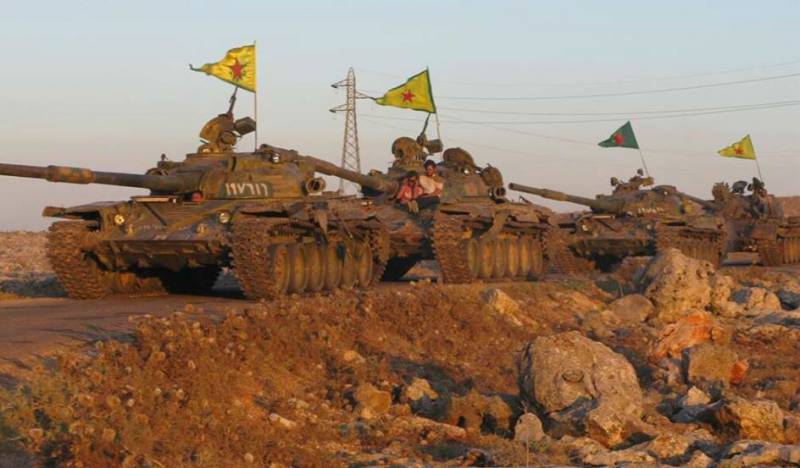
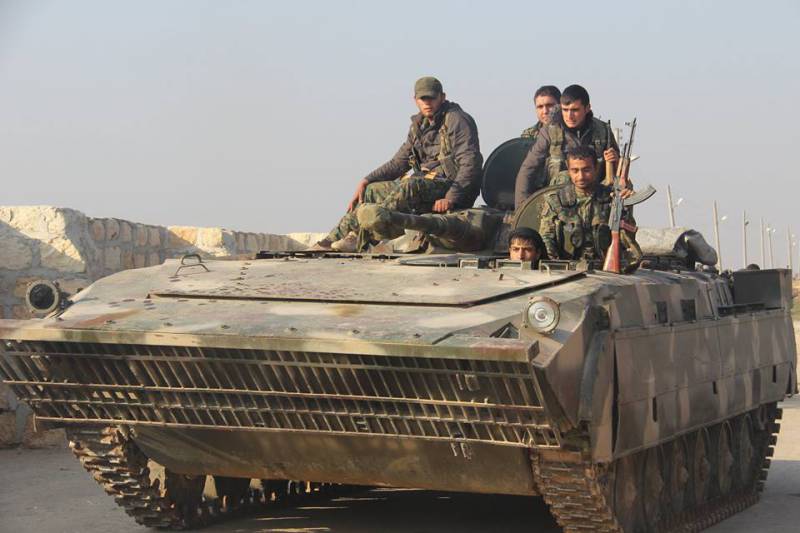
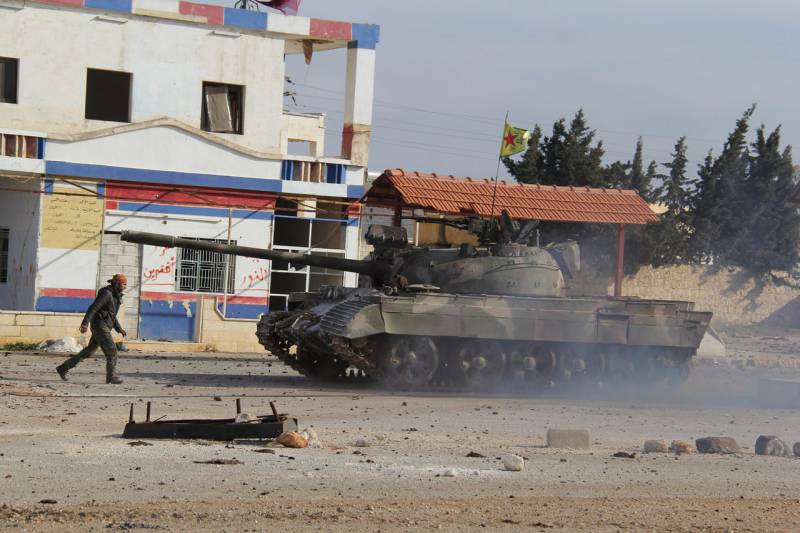
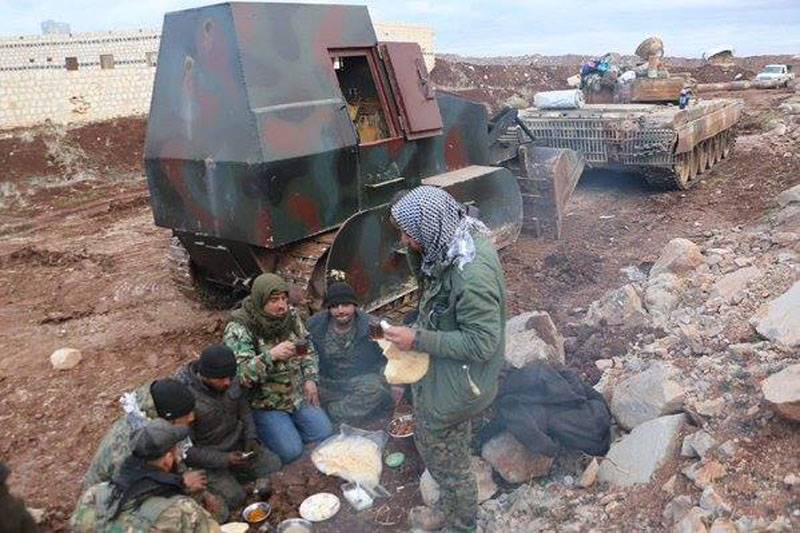

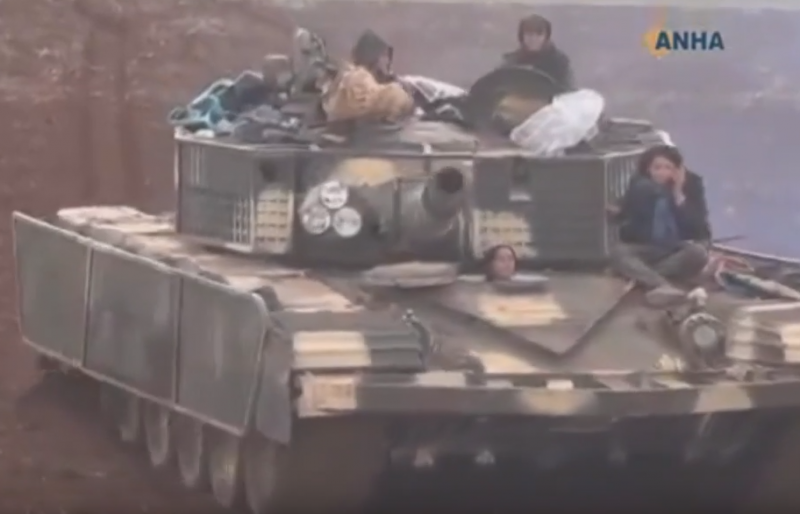
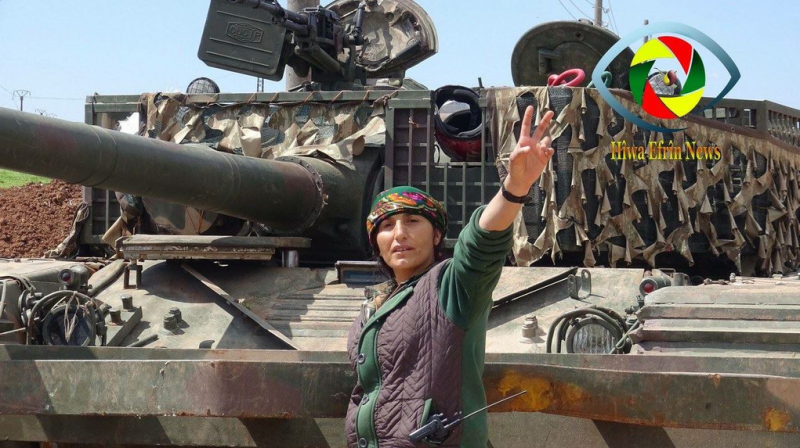
Information